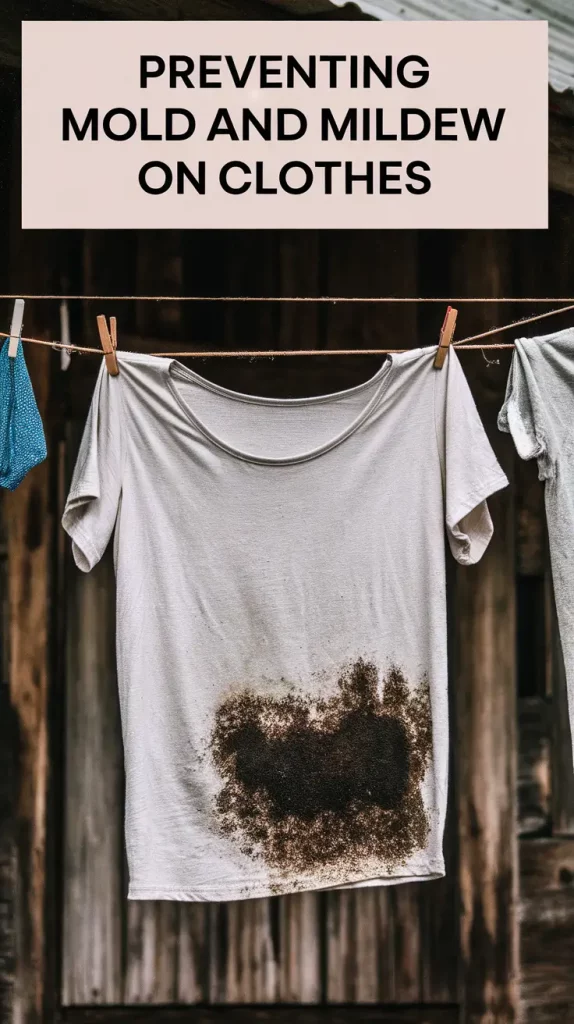Preventing Mold and Mildew on Clothes in Humid Weather: Best Tips for 2025
The mold-related fabric damage in Florida Louisiana and Hawaii has increased more than 30% since 2025. When wet air combines with inadequate ventilation it produces ideal conditions for mold and mildew to develop. Your clothes face various harmful effects which include unsightly stains and bad smells and allergic responses and irreversible fabric deterioration.
The solution exists for you to combat mold. The following guide provides effective solutions to protect your clothing from mold and mildew infestation specifically designed for U.S. regions with high humidity.
Who Should Read This?
- Homeowners and renters in high-humidity regions (Florida, Texas, Gulf Coast, Pacific Northwest).
- People with limited closet space or poor ventilation.
- Anyone storing clothes in basements, garages, or storage units.
- Allergy sufferers or families with sensitive skin.
The time has arrived to shield your clothes against mold development. Let’s break it down step-by-step.

Understanding Mold and Mildew on Fabric
What Makes Clothes So Vulnerable?
Mold and mildew thrive best when moisture combines with heat and darkness in an environment. Storage boxes with closets often fit this mold-friendly description. The absence of airflow and dehumidification allows fabric to become optimal conditions for fungal development. Natural fibers such as cotton linen and wool demonstrate the highest mold sensitivity which occurs when they get wet or when stored within sealed containers.
Common Risk Zones
-
- Laundry rooms without ventilation.
- Bedroom closets against outer walls.
- Garages and attics without insulation.
- Plastic storage bins without moisture absorbers.
“Have you ever found a musty smell coming from clothes you haven’t worn in months?”
Step-by-Step: How to Prevent Mold on Clothes
Step 1: Wash and Dry the Right Way
Mildew will naturally start to form on any clothing that maintains moisture. Any item must remain dry before storage.
- Always use the high-spin cycle to extract more water.
- Dry clothes fully before folding or hanging.
- Avoid leaving wet laundry in the machine longer than 30 minutes.
Recommended Appliances (2025 Models):
| Brand | Feature | Model Name |
|---|---|---|
| LG | Steam + Anti-Allergen Cycle | LG DLEX8900B |
| Whirlpool | Auto-Sense Drying | Whirlpool WED9620 |
| GE Profile | Smart Ventilation Drying | GE PTD90EBPTDG |
Pro Tip: Use a drying rack with a fan in high-humidity rooms.

Step 2: Control Humidity in Storage Areas
Mold growth occurs when air moisture becomes present. The prevention of mold growth happens through proper humidity control in storage areas and closets.
Tools That Help:
- Dehumidifiers: Maintain air moisture below 50%.
- Closet Vents: Encourage passive air movement.
- Charcoal or Bamboo Sachets: Absorb humidity naturally.
| Region | Ideal Indoor Humidity (%) |
|---|---|
| Florida | 45-50 |
| Texas | 40-50 |
| Oregon | 35-45 |
| Louisiana | 45-50 |
Step 3: Choose the Right Storage Materials
Plastic creates an excellent barrier against water but it fails to provide proper air circulation. Mold develops best in closed containers when there is no ventilation.
Best Practices:
- Opt for breathable cotton garment bags.
- Use open-grid storage bins with moisture-absorbing packets.
- Add cedar blocks or lavender sachets to fight odor and mold.
Question for you: Are your storage containers helping or hurting your clothes?
Best Long-Term Storage Practices in Humid Climates
Designing a Mold-Safe Closet
A properly ventilated storage space stands as your main protection method. Avoid stuffing clothes tightly together. Place hangers in a manner that allows air circulation while using fans together with moisture-absorbing products.
Checklist for Closet Protection:
- Ventilation grilles installed?
- Clothes spaced out on hangers?
- Bamboo charcoal packets placed on shelves?
- Regularly aired out every 2-3 weeks?
Handling Seasonal Clothing
The following steps should be followed to store seasonal clothing properly:
-
- Clean everything before packing.
- Add silica gel or DampRid in containers.
- Avoid vacuum-sealing for long durations.
| Storage Tip | Benefit |
|---|---|
| Wash before storage | Removes spores, dirt, skin cells |
| Use breathable containers | Prevents condensation |
| Include desiccants | Controls interior humidity |
| Avoid stacking bins tightly | Improves air flow |

Already Have Mold? Here’s What to Do
How to Identify Mold on Clothes
- Musty or earthy smell
- Gray, black, or green fuzzy patches
- Persistent stains even after regular washing
Natural Remedies That Work
- Vinegar soak: Soak in 1 cup vinegar per gallon of water.
- Baking soda wash: Add 1/2 cup during rinse cycle.
- Sunlight drying: Kills spores and removes odor.
When to Use Professional Services
You should contact a dry cleaning professional for fabrics which are delicate or valuable or hold sentimental worth. Professional cleaning services in 2025 provide anti-microbial treatments and ozone cleaning methods to their clients.
Quote: “I saved a $300 wool coat by using UV-cleaning at my local green dry cleaner.”
What’s New in 2025: Mold Prevention Innovations
Smart Technology in Laundry Appliances
Washers and dryers of today come equipped with three modern features:
- Humidity sensors
- UV-sterilization cycles
- App-controlled mold alerts
Antimicrobial Fabrics & Coatings
More brands are integrating:
- Silver-ion infused fibers
- Moisture-wicking weaves
- Self-ventilating garment designs
Top Retailers:
- Patagonia®: Mold-resistant outdoor gear
- Uniqlo®: Odor-control underlayers
- REI®: Travel clothing with anti-fungal mesh
Key Takeaways: Your Mold-Free Wardrobe Plan
Let’s sum it up:
- Never store even slightly damp clothes.
- Keep indoor humidity below 50%.
- Use breathable storage materials and active ventilation.
- Add natural mold repellents like charcoal or cedar.
- Stay updated with smart appliances and innovative fabrics.
Are you among the many who have dealt with mildew growth on their clothing? What hacks worked for you? Please leave your helpful storing suggestions beneath the text.
Share This With Friends!
- 🕊 X (Twitter)
Together we can protect wardrobes from mold contamination during the upcoming year 2025.

